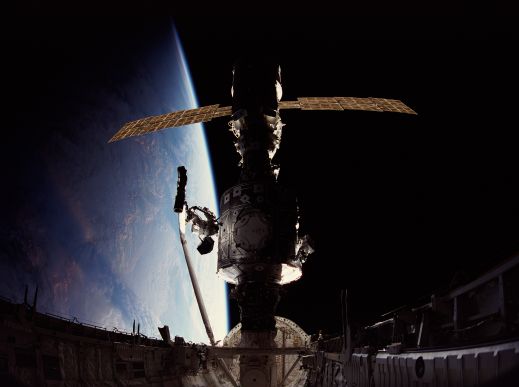
|
Credit & Copyright: STS-88 Shuttle Crew,
NASA
Explanation:
Move over
Mir, here comes the
International Space Station.
In December 1998, the crew of
Space Shuttle Endeavour
started construction
by joining the U.S.-built Unity node with the Russian-built
Zarya module. A close look at the
above IMAX(r) photograph will reveal
two astronauts working on Unity.
Below on Earth, the terminator between night and day is visible.
The International Space Station's low 250-mile Earth
orbit causes it to experience one complete
day/night cycle in about 90 minutes.
|
January February March April May June July August September October November December |
| |||||||||||||||||||||||||||||||||||||||||
NASA Web Site Statements, Warnings, and Disclaimers
NASA Official: Jay Norris. Specific rights apply.
A service of: LHEA at NASA / GSFC
& Michigan Tech. U.
Based on Astronomy Picture
Of the Day
Publications with keywords: international space station - space station - space - space shuttle
Publications with words: international space station - space station - space - space shuttle
See also:
